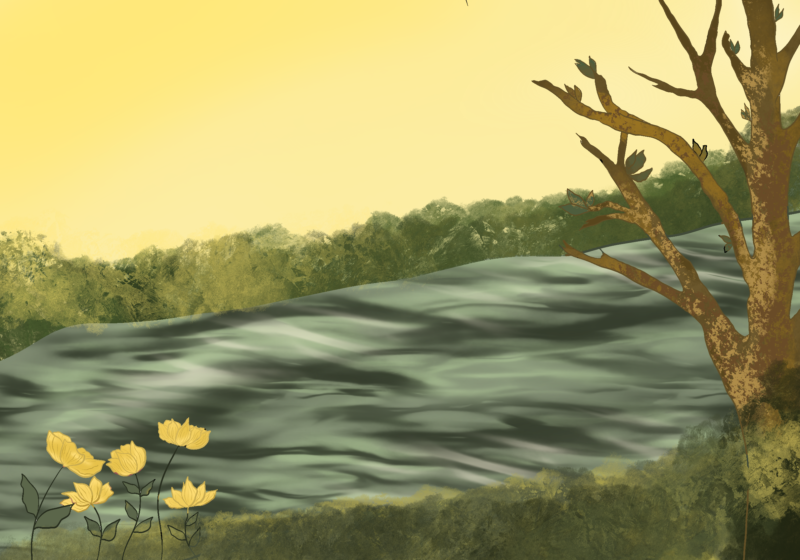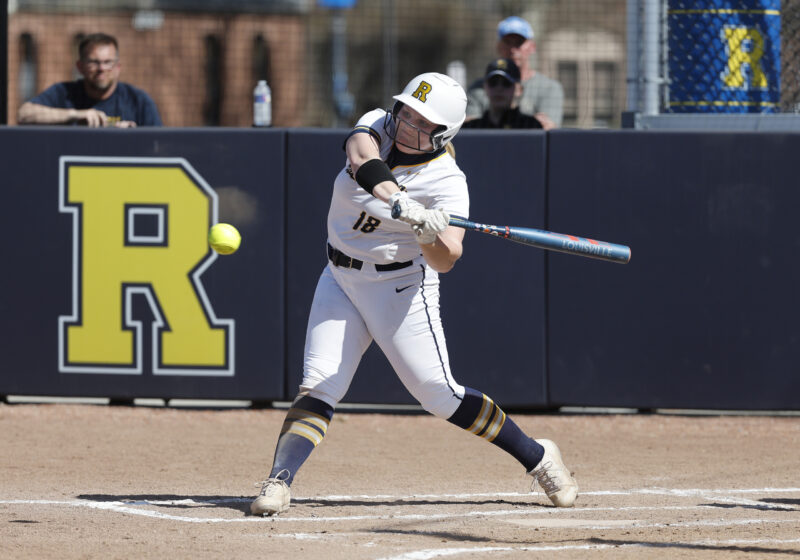In her book of essays, “Upstream,” poet Mary Oliver explores the interplay between creativity and nature. The titular essay argues that just because butterflies don’t write books, that doesn’t mean they don’t feel and know, in their own way, what they are and what role they play. The book is a tender exploration of the natural world that considers nature an equal, not a subordinate. “Teach the children. We don’t matter so much, but the children do,” Oliver pleads. “Give them the fields and the woods and the possibility of the world salvaged from the lords of profits. Stand them in the stream, head them upstream, rejoice as they learn to love this green space they live in.”
When the virus-that-shall-not-be-named first hit and I was home for my second remote semester in a row, I got an email from the professor who taught my first-ever Political Science class. The email had the subject line, “Thought you might enjoy this,” and enclosed was a link to a New York Times Opinions article about Taylor Swift’s album “folklore” and our return to nature in a post-COVID world.
At the time, I was intrigued but skeptical. The writer found that, in a culture disconnected from nature, Swift’s lyrics used nature-themed words seven times more than other pop songs. He argued that music that frames nature as a “place to bond, seek solace, or just hang out” might be more important in the climate conversation than art that preaches about saving it. As much as I loved the album, and as interesting of a perspective the article provided, I wasn’t sure if the music really indicated anything more than what it was: the result of an artist’s imagination running wild during a period of isolation.
A year and a half later, I attended a talk in the Hawkins-Carlson Room that I haven’t been able to stop thinking about since. Last spring, writer Amitav Ghosh delivered the Distinguished Visiting Humanist Public lecture. During the talk, he spoke about the importance of storytelling in changing how we think about and find solutions to the climate crisis. He argued that the humanistic sciences have been far too focused on humans, and noted that they must employ new modes of storytelling to engender action. He pointed out the connections between colonialism, capitalism, and the climate crisis, and how industrialism has rendered both humans and non-humans inert, devoid of agency, and fair game for exploitation. We have come to see nature as mute, he said, and we have lost the ability to communicate with and make meaning in conjunction with nature. The voices of nature and of marginalized groups have had muteness forced upon them by colonizers.
The issue of who is mute and who can speak lies at the core of the climate crisis. Ghosh said that the burden of imaginatively restoring the agency of nature lies on artists and storytellers, and is both an aesthetic and political task.
Mary Oliver admits that writing or art will never compare to truly experiencing nature. “‘Come with me into the field of sunflowers’ is a better line than anything you will find here, and the sunflowers themselves far more wonderful than any words about them,” she writes. Creativity is a futile attempt to capture nature — it is little more than an expression of hope. And everyone knows hope is the thing with feathers; I would rather we try and fail to capture nature than not try at all.
Earlier this month, Just Stop Oil activists threw tomato soup at Van Gogh’s “Sunflowers” in protest of the UK government’s fossil fuel licenses. The incident went viral and ended up on front pages across the world. Perhaps it takes the most famous artistic depiction of the natural world being threatened for us to realize what is truly at stake. Numbers and science alone don’t cut it — we need performance, we need narratives. Narratives cut through the noise and put the climate crisis at the forefront of our minds. They help us understand the emotional scale of climate catastrophe. Music, literature, movies, fashion, and art helps us both visualize the climate crisis but also connect to what we are at risk of losing. The poets have always written about nature, but now, more than ever, we need a variety of works that allow nature to complain and connect in creative ways.
“Pure Colour,” a novel by Sheila Heti, is an unconventional example of this. The book is a heartfelt, abstract look at a woman who has just lost her father. It pre-supposes that this world is the first draft of creation, and that the Creator is gearing up to destroy it to create a perfect second draft. The ice caps are melting, seasons have become postmodern, all water has plastic in it, grief is abundant, and humankind is not quite sure how to carry on. And so, they create art. They channel their rage and joy and pain into their own second drafts, through art and stories and plays. They learn to love when the world is ending, and find beauty and meaning in their imperfect world.
In the book, Heti finds unexpected ways for nature to speak by melding the human experience with animal and plant life. In the first draft of the universe, “plants were the grateful recipients of all consciousness” and they told stories because they had “front-row seats in the cosmic landscape.” In the second draft, they will have more agency. They will “not remember how we cut them … the vegetables will tell no stories … they will have a happy innocence which plants in the first draft have not.” The book seems to say that we have to learn to listen while nature still has stories to tell, and we need to incorporate them into visions of our own second drafts while we still have the chance.
We also have to be humbled, and we’ve seen that storytelling can be a potent way of creating empathy and breaking down perceptions of human exceptionalism. “Humility is the prize of the leaf-world,” Oliver claims. “Vain-glory is the bane of us, the humans.” Folktales that honor nature, indigenous knowledge that focuses on resilience and conservation, and rivers being granted legal personhood are all evidence of how culture can encourage sustainable attitudes and practices.
And so, maybe “folklore” did signal the need to return to nature. Cottagecore can be a TikTok aesthetic as well as a response to commercialism and a driver for sustainability. Our yearning to be frogs on lily pads and little worms can help us empathize with nature. After all, according to Mary Oliver, attention is the beginning of devotion.





